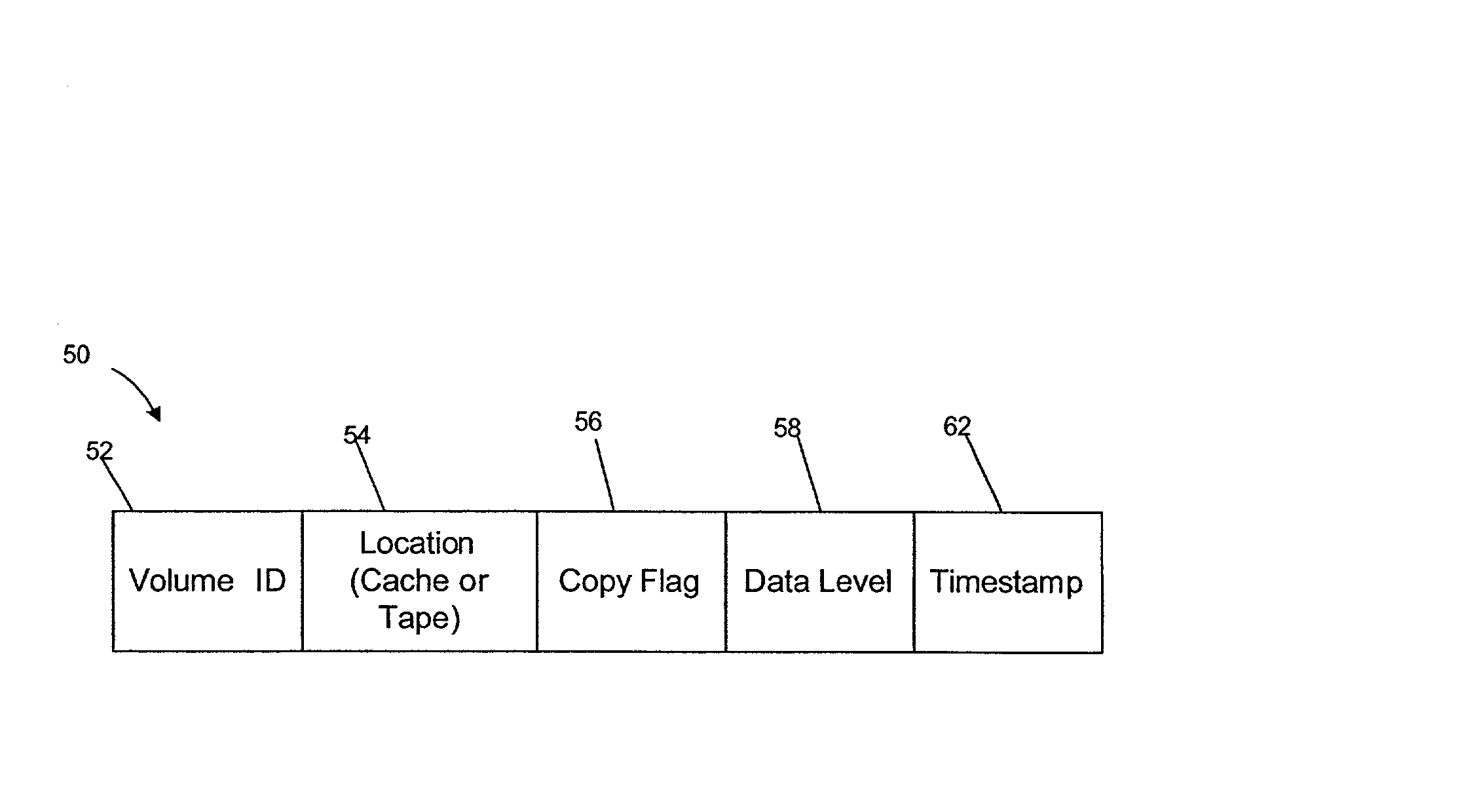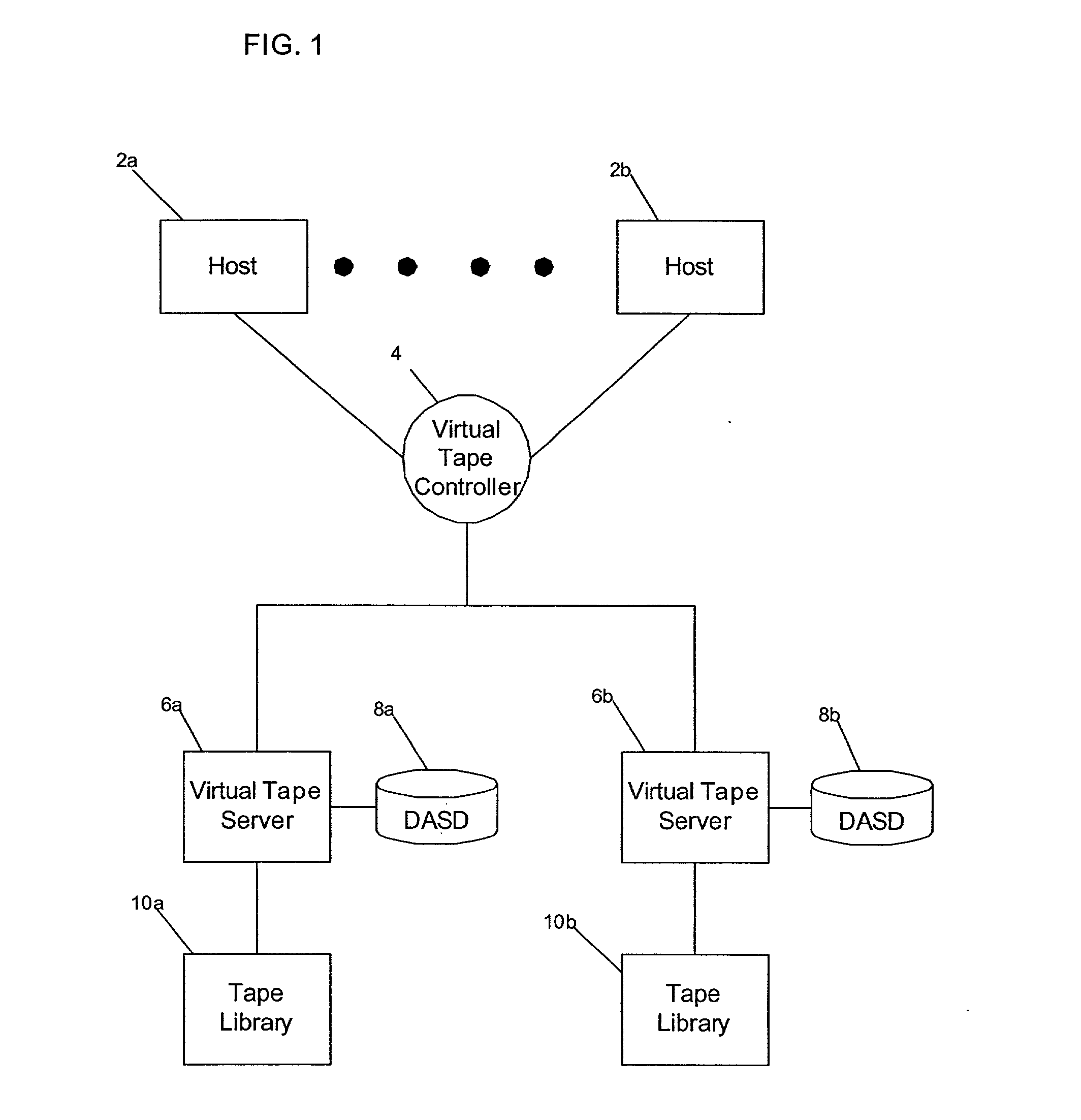Preferential caching of uncopied logical volumes in a peer-to-peer virtual tape server
a virtual tape server and preferential caching technology, applied in the direction of fault response, memory adressing/allocation/relocation, instruments, etc., can solve the problems of large delays in the backup process and the copy process cannot "catch-up" to the hos
- Summary
- Abstract
- Description
- Claims
- Application Information
AI Technical Summary
Benefits of technology
Problems solved by technology
Method used
Image
Examples
Embodiment Construction
[0008] Provided is a method, system, and an article of manufacture for maintaining data in two storage devices, wherein the data is comprised of a plurality of data sets. A flag is maintained for each data set indicating whether the data set has been copied to the other storage device. In addition, a timestamp is maintained for each data set. Each time a data set is modified or newly created, the data set is flagged as an uncopied data set using the flag associated with the data set. The preferred embodiments modify the timestamp for each uncopied data set by adding a period of time, and thus give preference because when space is needed in the storage device, the data set with the oldest timestamp will be deleted first.
[0009] In further embodiments, once the uncopied data set is copied from one storage device to the other storage device, the flag of the newly copied data set is changed to indicate that the data set has been copied. The timestamp for the newly copied data set is then...
PUM
 Login to View More
Login to View More Abstract
Description
Claims
Application Information
 Login to View More
Login to View More - R&D
- Intellectual Property
- Life Sciences
- Materials
- Tech Scout
- Unparalleled Data Quality
- Higher Quality Content
- 60% Fewer Hallucinations
Browse by: Latest US Patents, China's latest patents, Technical Efficacy Thesaurus, Application Domain, Technology Topic, Popular Technical Reports.
© 2025 PatSnap. All rights reserved.Legal|Privacy policy|Modern Slavery Act Transparency Statement|Sitemap|About US| Contact US: help@patsnap.com



